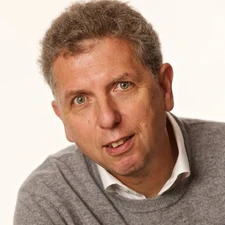Karl U. Schreiber

The 2016 Christiaan Huygens Medal is awarded to Karl U. Schreiber for his development work on ultra stable large ring laser gyroscopes for geodetic and other geosciences applications.
Karl Schreiber developed his first ultra stable ring laser gyroscopes for geodetic applications in the early 1990s in cooperation with the Department of Physics and Astronomy of Canterbury University, New Zealand. During the following two decades, he dedicated his career to further improving sensitivity and stability of this fascinating sensor, opening its possible applications to a wide range of geoscience applications. In 2001 a unique active ring laser gyroscope ‘G’ was built at the Geodetic Observatory Wettzell as a novel sensor to measure Earth’s rotation, allowing for the first time to observe forced diurnal polar motion, the so-called Oppolzer terms. The gained instrument stability allowed to measure the Chandler wobble of the Earth polar axis for the first time using an inertial sensor. In addition to variations of Earth’s rotation, the sensor is also sensitive to other geophysical quantities such as rotational components in teleseismic signals, toroidal free oscillations of the Earth’s body after large earthquakes, ocean-induced microseismic noise, and local terrain wind stress effects. Schreiber cooperates with groups worldwide and brings experts from different research fields together to advance ring-laser technology applications. With the group at Canterbury University and the seismology group at the Ludwig Maximilians University Munich, Germany, Schreiber developed the GEOsensor, a ring laser with active circumference control installed at the Piñon Flat Observatory close to San Diego, California, US, and routinely recording rotational seismological signals. Together with Canterbury University, the St. Petersburg Electrotechnical University and industry, he developed applications of fibre-optic gyroscopes for monitoring of mechanical structures such as earthquake-induced torsional motion of buildings. In close cooperation with the University of Pisa, Italy, he is installing a ring laser gyroscope in the Italian Gran Sasso underground laboratory close to L’Aquila for measuring general relativistic effects. With an ERC grant, Schreiber, in cooperation with the seismology group at the Ludwig Maximilians University Munich, is building a large three-component ring laser for rotational seismology and geodesy at the Geophysical Observatory in Fürstenfeldbruck, Germany. Schreiber’s ongoing inventiveness and creativity in promoting the application of this instrument concept across a broad range of geoscience applications make him a deserving recipient of the EGU Christiaan Huygens Medal.
